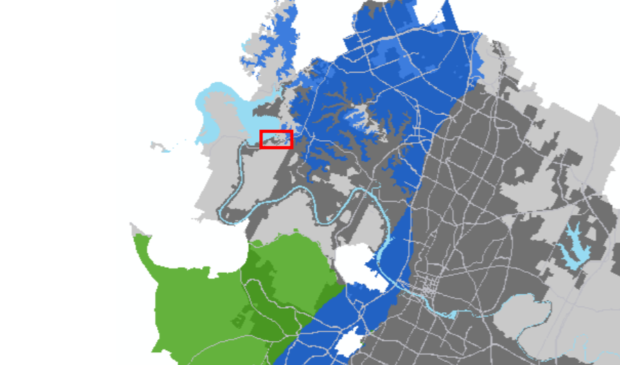West Austin housing development claims vested rights, compromises on development regulations
Monday, April 22, 2019 by
Jessi Devenyns Even if a property remains undeveloped for years, the property’s vested rights can, in some cases, allow a project to be grandfathered into another era’s development regulations. In the case of a project at FM 620 at Storm Drive, that era is the 1970s.
According to Atha Phillips, the Watershed Protection Department’s environmental program coordinator, who addressed the Environmental Commission at its April 17 meeting, the Development Services Department ruled that the vested rights of an affordable housing project off FM 620 were unclear and were therefore eligible for a project consent agreement. A PCA allows city staff and the developer of a project to determine applicable regulations for a site that are more closely aligned with current code, but also incentivize the project.
The project, said Michael Whellan, who was representing the applicant, will add affordable housing to District 6 where it is “desperately needed.” The site plan filed for the project shows 180 units renting at 60 percent of the median family income.
Phillips explained that the developers of the project were looking to develop the land with regulations equivalent to those in effect in the 1970s. “In 1970, we didn’t have really any regulations,” she said.
Since the city requires some checks and balances on development, the project was not allowed to pass unfettered into development stages. While limitations on cut and fill, construction on slopes and impervious cover were drastically reduced on the site, the developers made some concessions, negotiating with staff to bring the property into full compliance with the Dark Skies Ordinance and current heritage tree code.
Since the property is in the city’s two-mile extraterritorial jurisdiction, there is no requirement that they comply with tree ordinances even under present-day code. Even so, 63 percent of the trees on the lots they are developing will be spared. “Even by full-purpose city standards, that is pretty good,” said Phillips.
Furthermore, two out of the eight lots that make up this parcel of land will remain undeveloped and protected as open space.
The project is also in partial compliance with the Hill Country Roadway Ordinance and will offer a 40-foot buffer of natural area off FM 620, whereas current regulations would require 100 feet.
There are two sides to every coin, so the city too had to make a few allowances. On the tracts that will be developed, 56 percent of the site will have impervious cover; current code allows for 20 percent. There will also be up to 7 feet of cut and 11 feet of fill permitted. Current code limits cut and fill to 4 feet. According to Phillips, “some of that is located on slopes, but not much.” Still, as part of the PCA compromise, there will be some construction on slopes.
Even with far more lax regulations on the development, commissioners were still supportive of the project.
“We’ve seen a lot of these cases come through in 620,” said Commissioner Andrew Creel. “This is the very first one in my recollection proposing affordable housing in this area.”
The commissioners voted unanimously to recommend approval of the project. Commissioners Linda Guerrero, Peggy Maceo and Curtis Smith were absent.
The Austin Monitor’s work is made possible by donations from the community. Though our reporting covers donors from time to time, we are careful to keep business and editorial efforts separate while maintaining transparency. A complete list of donors is available here, and our code of ethics is explained here.
You're a community leader
And we’re honored you look to us for serious, in-depth news. You know a strong community needs local and dedicated watchdog reporting. We’re here for you and that won’t change. Now will you take the powerful next step and support our nonprofit news organization?











